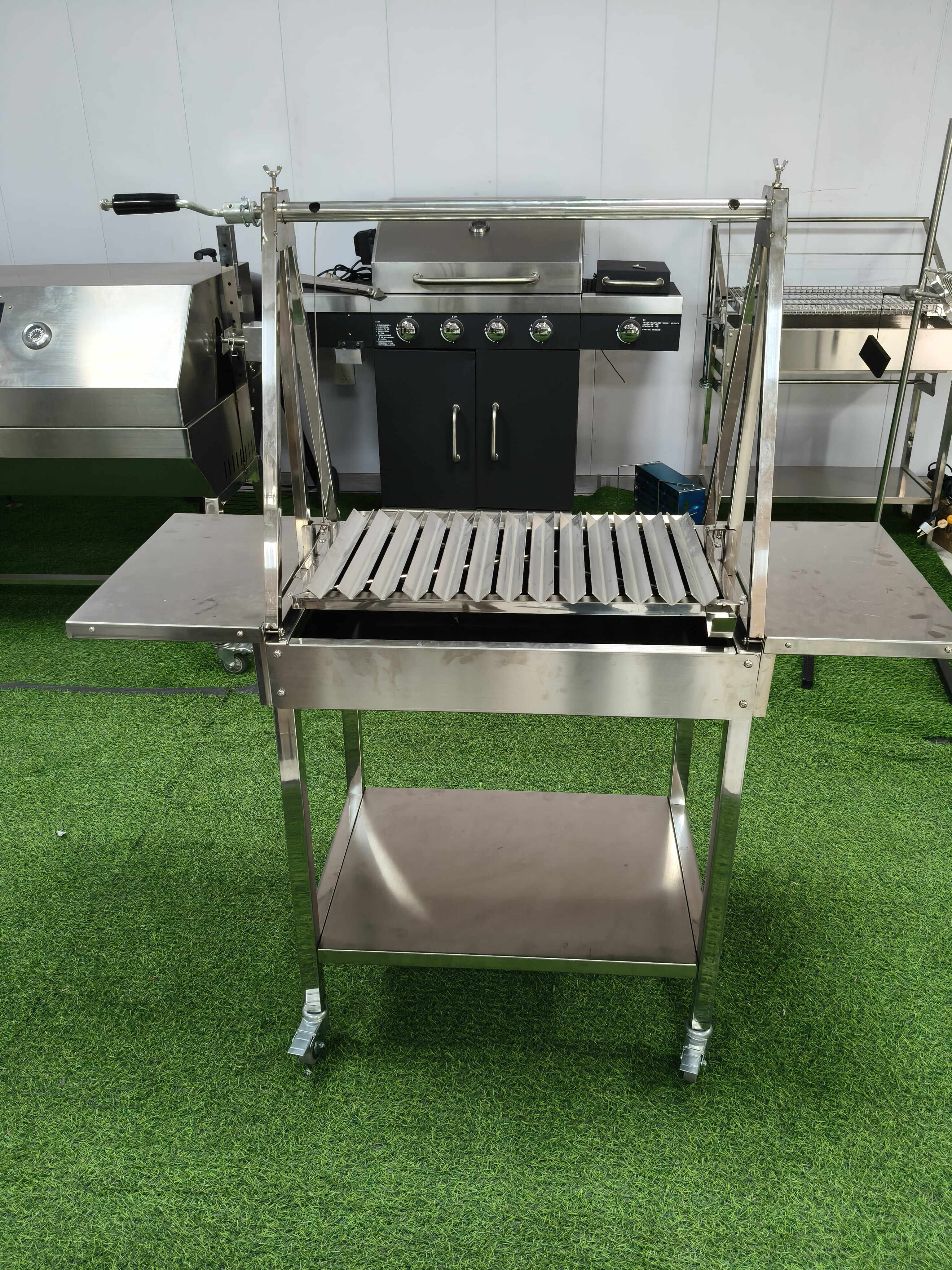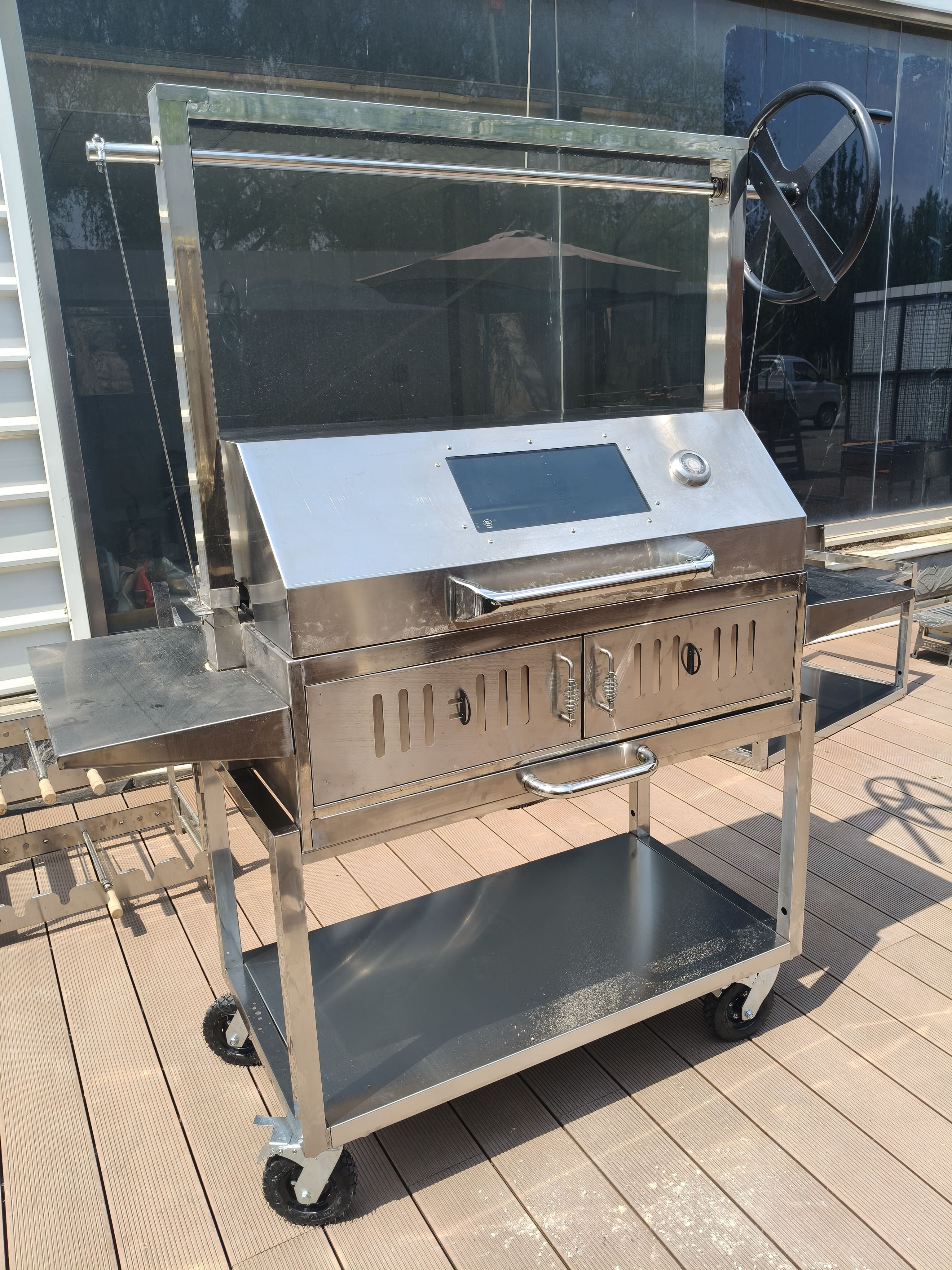Barbecue Grill Reviews: Which One is Right for You?
Barbecue grills come in all shapes and sizes, from portable charcoal models to high-tech gas grills. Choosing the right one depends on how you cook, how many people you feed, and your budget. This guide reviews the top types of barbecue grills, highlighting their pros, cons, and best uses. Whether you love smoky ribs, quick burgers, or slow-cooked brisket, there’s a barbecue grill that fits your style.
1. Gas Grills: Fast and Convenient
Gas grills are the most popular choice for their speed and ease of use. They run on propane or natural gas, heating up in 10–15 minutes—perfect for weeknight dinners or last-minute cookouts.
Top Model: Weber Genesis II E-335
- Features: 513 square inches of cooking space, 3 burners (39,000 BTU), porcelain-enameled grates, and a built-in thermometer.
- Pros: Heats evenly, so burgers and veggies cook at the same rate. The side burner lets you warm sauces or cook sides like beans. Easy to clean with removable grates.
- Cons: Less smoky flavor than charcoal. Propane models require tank refills; natural gas needs professional installation.
- Best for: Families who grill often, want quick meals, or prefer convenience over intense smoke flavor.
2. Charcoal Grills: Smoky Flavor for Purists
Charcoal grills use briquettes or lump charcoal to create that classic smoky taste. They take longer to heat (20–30 minutes) but are loved for their rich, grilled flavor.
Top Model: Weber Original Kettle 22-inch
- Features: 363 square inches of cooking space, adjustable dampers (control heat), and a built-in ash catcher.
- Pros: Affordable, portable, and easy to use. The kettle design traps smoke, infusing food with that signature charcoal taste. Great for searing steaks or smoking ribs.
- Cons: Messier than gas (ash cleanup), and heat is harder to control. Charcoal needs to be replaced after each use.
- Best for: Grill enthusiasts who prioritize flavor over speed. Perfect for weekend cookouts where you have time to tend the fire.
3. Pellet Grills: Versatile Smokers and Grills
Pellet grills use wood pellets (hickory, mesquite, apple) to add smoke flavor while offering precise temperature control. They can grill, smoke, bake, or roast—making them super versatile.
Top Model: Traeger Pro 575
- Features: 575 square inches of cooking space, digital temperature control (165–450°F), and Wi-Fi connectivity (monitor from your phone).
- Pros: Adds wood smoke flavor without the hassle of charcoal. Set it and forget it—great for slow-cooking brisket or baking pizza. Pellets come in flavors to match your food.
- Cons: More expensive than basic gas or charcoal grills. Pellets can be costly to replace, and the grill needs electricity to run.
- Best for: Home cooks who want to experiment—smoke a pork shoulder in the morning, then grill burgers for dinner.

4. Electric Grills: Perfect for Small Spaces
Electric grills plug into an outlet, making them ideal for apartments, balconies, or places where gas/charcoal is banned. They heat quickly and are easy to clean.
Top Model: George Foreman 4-Serving Electric Grill
- Features: 150 square inches of cooking space, non-stick grates, and a drip tray (catches fat).
- Pros: Compact, smokeless (no outdoor space needed), and cooks in 5–10 minutes. Great for indoor use in winter or small patios.
- Cons: No real smoky flavor. Limited size (only fits 4 burgers) and can’t reach high searing temperatures.
- Best for: Apartment dwellers, small families, or anyone with restricted outdoor space. Good for quick meals like grilled cheese or chicken breasts.
5. Kamado Grills: Heavy-Duty for All Seasons
Kamado grills are egg-shaped, made of ceramic, and retain heat extremely well. They can grill, smoke, bake, or even roast—all with excellent temperature control.
Top Model: Big Green Egg Large
- Features: 262 square inches of cooking space, ceramic construction (holds heat up to 750°F), and airtight seals.
- Pros: Versatile—smoke ribs at 225°F or sear steaks at 700°F. Ceramic keeps heat in, so it works in rain, snow, or wind. Durable (lasts 10+ years).
- Cons: Expensive (over $1,000), heavy (hard to move), and takes time to learn to use.
- Best for: Serious grillers who want year-round use and versatility. It’s an investment but handles everything from low-and-slow smoking to high-heat grilling.
6. Portable Grills: On-the-Go Cooking
Portable grills are small, lightweight, and perfect for camping, tailgating, or picnics. They come in gas, charcoal, or electric versions.
Top Model: Coleman RoadTrip 285 Portable Gas Grill
- Features: 285 square inches of cooking space, 3 burners, and foldable legs (easy to carry).
- Pros: Compact but spacious enough for 8 burgers. Runs on small propane canisters (easy to pack). Sets up in 5 minutes.
- Cons: Less powerful than full-size grills. Limited to propane (no natural gas option).
- Best for: Outdoor adventurers, campers, or tailgaters who want to grill on the go.
FAQ
Which barbecue grill is easiest to clean?
Electric grills (like George Foreman) are the easiest—non-stick grates and drip trays wipe clean. Pellet grills also have ash cleanout systems, while charcoal grills are messiest.
Do charcoal grills taste better than gas grills?
Many people think so—charcoal adds a smoky, rich flavor that gas can’t match. Gas grills are better for convenience, not flavor.
What’s the best barbecue grill for beginners?
A basic gas grill like the Weber Spirit II E-210 is easiest—simple to light, control heat, and clean. No need to learn fire management.
Can pellet grills replace smokers?
Yes. Pellet grills maintain low temperatures (225–250°F) perfect for smoking brisket or ribs, with built-in wood pellets for smoke flavor.
Is a Kamado grill worth the money?
If you grill often and want versatility (smoke, bake, grill), yes. It lasts decades and works in all weather, making it a long-term investment.
What’s the best portable barbecue grill for camping?
The Coleman RoadTrip 285—small enough to fit in a car, runs on portable propane, and cooks enough for 4–6 people.
How do I choose between gas and charcoal?
Pick gas for speed, convenience, and easy cleanup. Pick charcoal for smoky flavor, affordability, and that traditional grilling experience.
Table of Contents
- Barbecue Grill Reviews: Which One is Right for You?
- 1. Gas Grills: Fast and Convenient
- 2. Charcoal Grills: Smoky Flavor for Purists
- 3. Pellet Grills: Versatile Smokers and Grills
- 4. Electric Grills: Perfect for Small Spaces
- 5. Kamado Grills: Heavy-Duty for All Seasons
- 6. Portable Grills: On-the-Go Cooking
-
FAQ
- Which barbecue grill is easiest to clean?
- Do charcoal grills taste better than gas grills?
- What’s the best barbecue grill for beginners?
- Can pellet grills replace smokers?
- Is a Kamado grill worth the money?
- What’s the best portable barbecue grill for camping?
- How do I choose between gas and charcoal?

